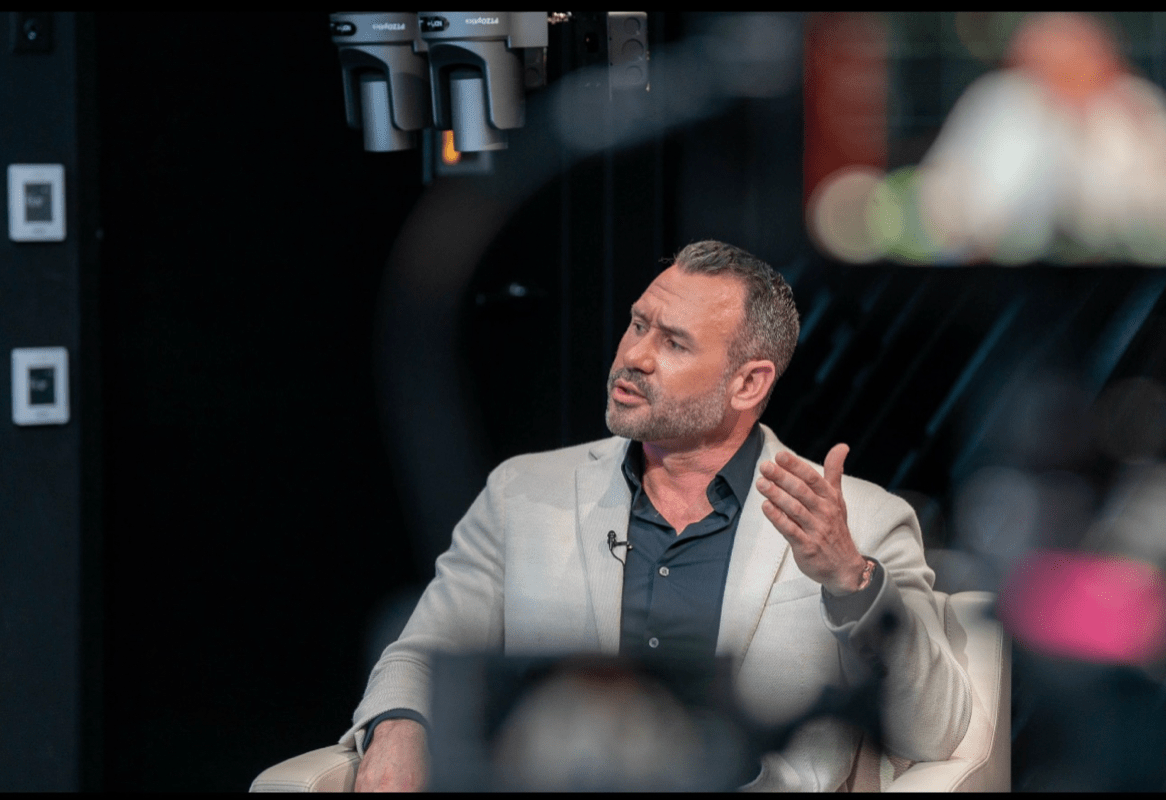Lifestyle
From High School Dropout to 22-Year-Old Millionaire: The Caleb Boxx Success Story

Many individuals grow up hearing the same things from their parents—you need to graduate high school, go to college and get a degree, and then you’ll land a nice, steady job that will support you and your family. There’s this belief ingrained in us all that our grades hold the key to our future. First to get into a good college, then to get a good job that makes our family proud.
The fact of the matter is a bit more bleak than the web our parents wove, however. Many study for years, take on thousands of dollars in debt, and then that degree they worked so hard for takes them to other places, or even nowhere. Or, they get the job and it isn’t anything like what they thought it would be. They’re miserable, they’re stuck, and they’re feeling hopeless.
Fortunately for some, like Caleb Boxx, founder of YouTube Automation and Automate Channels, they find out early on that the one-track plan for their future isn’t actually what they want. Boxx realized that there is more than just one road that can lead to success, and he started paving his own path at just 11 years old. Now, he’s a 22-year-old millionaire and he doesn’t have any regrets about the decisions he made to get where he is.
Starting Young
Entrepreneurship is a part of who Boxx is as a person. At 11 years old, instead of running around with his friends, Boxx created a website company. He would charge startups a fee to create their sites for them, though it’s probably safe to assume that none of them knew they had hired a child.
At 12 Boxx decided to take his wit and business savvy to YouTube, trying his hand as a gamer, though success didn’t strike right off the bat and he even quit the platform that his business now revolves around for a period of time.
“I started recording myself playing video games and nothing would ever happen,” said Boxx. “I was only earning $200 a month, so I quit the whole dream because it wasn’t working.”
At one point a friend of his went viral and amassed a million subscribers on YouTube. Boxx decided to once again chase his dreams, this time learning from someone who was already making that dream a reality. He turned into a livestream, donated the last $200 in his bank account, and asked for a quick call. He offered to edit his friend’s videos, write his scripts, and do a majority of his work all for free so he could gain admittance into his mastermind group.
This was the chance he needed and it wasn’t one he was going to waste. He wanted to be a professional so he started acting like one, gaining maturity and absorbing as much information about YouTube success as he could. He made vows with those in the mastermind group to focus solely on building their individual empires, setting a goal of reaching $1 million. Throughout this entire experience, he learned about more than just YouTube, he also learned about entrepreneurship.
Reaching Success
At just 16 Boxx used all the knowledge he had gained and created his first YouTube channel. A year later he made another one and immediately gained 80 thousand followers. After roughly six months with his channels, he was making around $20 thousand a month, a far cry from the $200 he started out with.
One thing led to another and he was giving 30% of his site revenue to one of his friends, helping them build their own successful channel. From there, revenue kept increasing and he was bringing in employees. At 18 he first started making seven figures, bought his dream car, moved to a new city, and started to study entrepreneurship more in depth.
It was at this point that people started to seek him out, asking if he could show them the ropes of YouTube and share the knowledge that helped him become successful on the platform. He created a business model and began to teach, allowing him to enter his 20s as a successful businessman. Now, Caleb offers a “done-for-you” mentorship program, where his company holds the hand of clients and manages all of their content.
The path Boxx chose wasn’t exactly orthodox or without challenges, but it was his own and something he wholeheartedly wanted. He went from a high school dropout to a 22-year-old millionaire, generating over $3 million from YouTube automations. Sometimes the path to success looks different than we thought it would, but with hard work and perseverance, anyone at any age can make their dreams a reality.
About Caleb Boxx
Caleb Boxx is a founder of YouTube Automation, a business model that allows people to automate their YouTube channels creating passive income. Boxx has helped hundreds of content creators. To learn more about Caleb Boxx, please visit https://www.automatechannels.com/
Lifestyle
Behind the Scenes: A Conversation with Derik Fay – Sharing Stages with Legends and becoming one

In the bustling world of motivational speaking, where voices rise and inspire, one individual stands out: Derik Fay. Not just for his powerful messages, but for the remarkable journey that has placed him alongside some of the world’s most influential figures.
I recently had the opportunity to sit down with Derik Fay to delve into his experiences sharing stages with icons like Tony Robbins, Tim Grover, and a constellation of A list celebrity names.
“It’s been a surreal experience,” Fay began, a hint of awe still present in his voice. “To stand next to icons who have inspired millions, to witness their command of an audience, it’s a masterclass in itself.
Fay’s journey, as he describes it, is a blend of hard work, delusional confidence, genuine passion, and a relentless pursuit of connection.
“It’s not just about the name on the marquee,” he emphasized. “It’s about the shared energy, and the exchange of ideas. Whether it’s Kevin Hart’s comedic genius or Alex Rodriguez’s athletic drive, there’s something to learn from everyone I share the stage with.”
What struck me most during our conversation was Fay’s emphasis on authenticity. “I try to bring the same realness to the stage that I do in my online content,” he explained, referencing his popular Instagram reels and YouTube shorts.
“People connect with genuine emotion, with relatable stories. It’s about building a bridge, not just delivering a lecture.”
Fays direct, conversational style, which I’ve observed in his online content, and in our interview clearly translates to his live performances. “I’ve learned that vulnerability is a strength,” he shared. “Whether I’m talking about the challenges of fatherhood or the importance of emotional intelligence, I want people to walk away feeling seen and understood.”
Beyond the star-studded appearances, Fay sees his speaking engagements as a platform for positive change. “It’s about sharing insights that can make a real difference,” he told me.
“Whether it’s inspiring entrepreneurs to chase their dreams or helping individuals navigate difficult relationships, I want to leave a lasting impact.”
The lessons learned from sharing stages with these giants has undoubtedly shaped Fay’s approach. “I’ve absorbed so much from watching these masters at work,” he reflected. “It’s not just about the techniques, it’s about the passion, the commitment, the unwavering belief in the power of communication.”
As Derik Fay continues to grace stages around the globe, one thing is clear: his journey is a testament to the power of authentic connection and the enduring influence of shared experiences. And with each event, the legacy of these moments continues to grow, leaving an indelible mark on both the speaker and the audience.
-

 Tech4 years ago
Tech4 years agoEffuel Reviews (2021) – Effuel ECO OBD2 Saves Fuel, and Reduce Gas Cost? Effuel Customer Reviews
-

 Tech6 years ago
Tech6 years agoBosch Power Tools India Launches ‘Cordless Matlab Bosch’ Campaign to Demonstrate the Power of Cordless
-

 Lifestyle6 years ago
Lifestyle6 years agoCatholic Cases App brings Church’s Moral Teachings to Androids and iPhones
-

 Lifestyle4 years ago
Lifestyle4 years agoEast Side Hype x Billionaire Boys Club. Hottest New Streetwear Releases in Utah.
-

 Tech6 years ago
Tech6 years agoCloud Buyers & Investors to Profit in the Future
-

 Lifestyle5 years ago
Lifestyle5 years agoThe Midas of Cosmetic Dermatology: Dr. Simon Ourian
-

 Health6 years ago
Health6 years agoCBDistillery Review: Is it a scam?
-

 Entertainment6 years ago
Entertainment6 years agoAvengers Endgame now Available on 123Movies for Download & Streaming for Free
